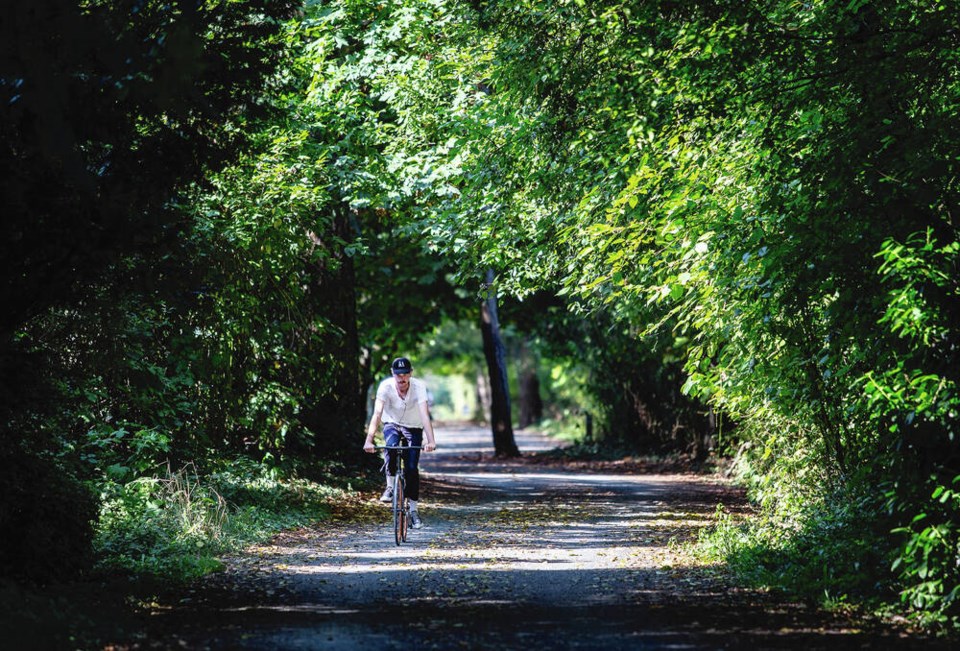A commentary by two urban planners.
Many points in the recent commentary, “Higher density means losing trees, gardens and more” (Dec. 21), hit home, because most people appreciate the mental and physical benefits that come with proximity to living things.
But the need to be close to nature should actually be seen as a reason for increased density rather than the preservation of the status quo.
This primal itch can be scratched in all manner of ways, and planning for equity of access to nature is extremely important.
This is fundamentally a problem of space. To facilitate access to green space and blue space (areas adjacent to water), most of this space needs to be public, and we need to reduce the time and distance needed to reach it.
Single family homes with enclosed private gardens and yards — until recently the dominant land use provided for in Victoria’s zoning bylaws — are the least space-efficient way of partitioning our ecosystem.
Reducing the potential of a city to a collection of single-family dwellings with yards and gardens means reserving access to green space to those who can afford a $1.3-million price tag, while increasing pressure on uninhabited areas on the city’s boundaries.
It also generates a mix of plants and animals that often have a negative impact on the larger ecosystems. Pollinators, birds, insects and mammals do not thrive in the monocultures that we call lawns.
Trees and shrubs chosen for their visual attractiveness or pleasing scents often need more water than our climate can provide, and do not offer the carbon sequestration that our wild forests would if we left them alone.
Compact, denser ways of planning and building reduce environmental costs in many ways.
Infill housing consumes less land per inhabitant, saving space for other things. Consider the accompanying reduced need for car use: Less land would be needed for roads, and carbon emissions would be reduced.
Additionally, increased green space and density can coexist. Between 2013 and 2021, Victoria’s tree canopy increased by an amount equivalent to 60 soccer fields while density increased.
Paved surface parking lots for private vehicles worsen the urban heat-island effect. With responsible development of dense urban centres, we could reduce the need for these machines and have more space for the use of people of all ages and abilities — maybe even as parks.
We need to build housing. We will either do this in a sustainable way, or we will continue to build sprawling suburbs that contribute to habitat loss and climate change.
Density makes possible the conservation (and possible expansion) of wild places and the retention of accessible natural spaces in the public realm. It allows for more space to be parks, sea walks, marshland and hilltop picnic spots, and it does this in the middle of the city.
The private planted garden is beautiful, and with care and skill can be shaped into a flourishing ecosystem. But too often, cultural norms and a focus on esthetics rather than science result in a sort of green mirage — equating the colour green with the idea that we are doing something good for the planet.
As we experience the effects of climate change with increasing frequency and intensity, we need new ways of living. The shift into denser urban environments is already happening, and the way we manage this shift will spell either salvation or doom.
This is not a niche, development industry-driven way of thinking. Most academics, along with the UN Intergovernmental Panel on Climate Change, sa╣·╝╩┤л├╜ Mortgage and Housing Corp., Sierra Club, David Suzuki Foundation, Fraser Basin Council, the White House, as well as our own government in the form of the sa╣·╝╩┤л├╜-British Columbia Expert Panel on the Future of Housing Supply and Affordability Report all cite restrictive land-use policies as having a negative impact on the environment.
The increasing desire, or necessity, for people to move into cities, should be capitalized on to ensure that large swaths of suburban and exurban land revert to the wild, administered as protected nature sanctuaries.
This would mean a return to conditions not seen for hundreds of years, allowing plants and animals to go back to their original breeding and hunting grounds, or find new ones that are more advantageous after decades of climate change.
It would allow streams, lakes, wetlands and rivers to flow along their natural courses, reducing the effects of erosion and mitigating flooding.
In short, this more urban future is one that facilitates a world where the true natural patrimony of our planet could function in the way it’s supposed to. That is far more important than everyone having their own quarter acre with a fence.



